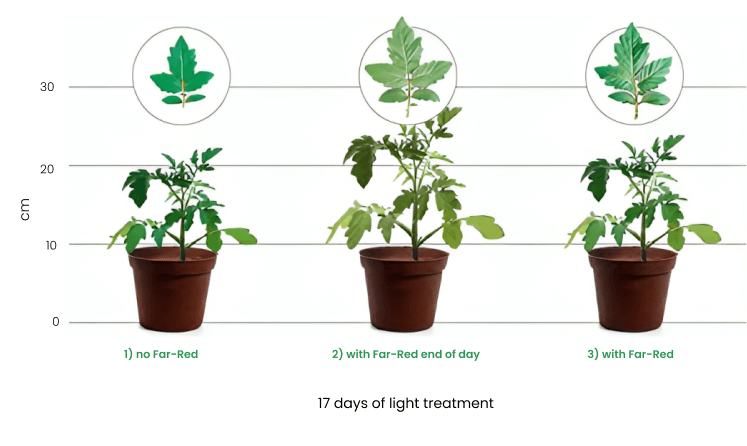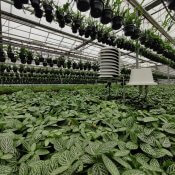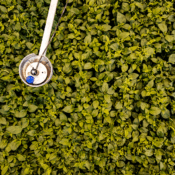Sensor development: far-red light for optimal growth
Research increasingly demonstrates the impact of far-red light on crucial aspects of plant cultivation. Having control over far-red light in your greenhouse offers some advantages:
- Vegetative growth control: far-red light creates a shading effect that leads to larger leaves, which is particularly interesting for crops like lettuce, spinach, and basil.
- Influence on the plant’s day-night rhythm: for short-day plants such as chrysanthemums, it can shorten the time to harvest.
- Flowering stimulation or prevention: adjusting the ratio of far-red light can either stimulate or prevent flowering.
With a ‘standard’ PAR sensor, we measure visible light (400 to 700 nm). This is the part of the light spectrum responsible for photosynthesis. Far-red light consists of radiation with wavelengths ranging from 700 to 750 nm. Recent scientific research has shown that this part of the light spectrum also influences photosynthesis effectiveness. There is even a request to the ANSI/ASABE standard to expand the active photosynthesis range to 400 – 750 nm.

The new PAR-FAR sensor not only measures PAR light but also far-red light. When you combine these values, it provides the ePAR (extended PAR) value, a measurement that offers a more comprehensive understanding of photosynthesis. Additionally, we calculate the PAR to far-red ratio for you, which is particularly interesting for tracking the plant’s development.
In a greenhouse, many factors influence the amount of far-red light a plant receives, making measuring far-red light essential for gaining insight. As a grower, this allows you to exert more control over the quality of your product and improve yields.
Are you interested in when this sensor is operational? Click the button below:



30MHz is typing… Our extended support team is ready to chat!
At 30MHz we think it’s important that our users can use our platform in an optimal way. At times you may have questions and you would like some help from our support team. Email and our support page filled with helpful articles were your go to’s. But we thought it was time for something extra… ...Read more
New 30MHz connect casing: How we protect your tech
To make sure your dataflow is fully protected, 30MHz introduces a new connect casing: waterproof, dust proof and even resistant to hits. This special shield will last longer and ensure a reliable dataflow from the connected sensor. What does that full protection mean? That’s what we will explain in this article. Watertight: resistant to wetness ...Read more
Most popular sensors for your greenhouse
As a grower, you know that optimal crop development starts with precise monitoring of your cultivation environment. But how do you transform raw data into actionable insights for your crops? This is where our wireless sensors and the 30MHz platform come together. Our sensors measure essential variables such as VPD, dew point, moisture deficit, EC, ...Read more


